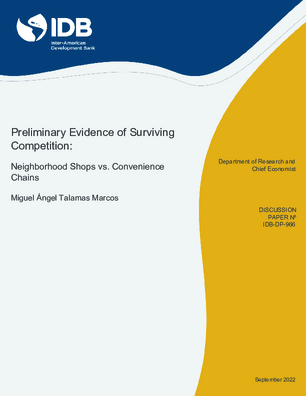Preliminary Evidence of Surviving Competition: Neighborhood Shops vs. Convenience Chains
Date
Sep 2022
Newer Edition
Hundreds of millions of microenterprises in emerging economies face increased competition from the entry and expansion of large firms that offer similar products. This paper studies how one of the worlds most prevalent microenterprises, neighborhood shops, confront competition from convenience chains (e.g., 7-Eleven) in Mexico. To address the endogeneity in time and location of chains store openings, I pair two-way fixed effects with a novel instrument that, at the neighborhood level, shifts the profitability of chains but not of shops. An expansion from zero to the average number of chain stores in a neighborhood reduces the number of shops by 16%. Consistent with the theoretical framework, this reduction is not driven by an increase in shop exit but by a decrease in shop entry. Shops retain their sales of fresh products and 96% of their customers, but customers visit shops less often and spend less on non-fresh and packed goods. I present evidence consistent with shops surviving by exploiting comparative advantages stemming from being small and owner-operated, such as lower agency costs, building relationships with the community, and offering informal credit.




